
HEIDELBERG warrants that the HEIDELBERG software downloaded into the PMC has been tested for security issues and is trustworthy. To discover potential security issues on computers in the local Prinect system environment, the Security Advisor checks the computers connected to the Prinect Maintenance Center for security issues and provides recommendations on how to resolve these issues.
![]() Prerequisite: The following prerequisites must be met to be able to use the Security Advisor:
Prerequisite: The following prerequisites must be met to be able to use the Security Advisor:
•A HEIDELBERG Customer Portal connection must be activated for the Prinect Maintenance Center. See PMC Setup. This will take place if Prinect Software Center has sent your customer ID to HEIDELBERG Customer Portal and the PMC. The "Security Advisor" view is not visible until the-HEIDELBERG Customer Portal connection has been activated.
•Prinect Maintenance Center must be logged in to HEIDELBERG Customer Portal. See HEIDELBERG Customer Portal log in (5). If the HEIDELBERG Customer Portal connection is activated but the Prinect Maintenance Center is not yet logged in to HEIDELBERG Customer Portal, the "Security Advisor" view is visible but no security checks are performed. The following view displays:


The maintenance mode icon is displayed in the view selector ribbon (1).
After clicking the icon of the "Security Advisor" view, the button "Switch to HEIDELBERG Customer Portal login" is displayed in the details area (2). With this button you can go directly to the HEIDELBERG Customer Portal login page.
•Once the customer ID has been transmitted, the HEIDELBERG Customer Portal connection has been activated, and the Prinect Maintenance Center is logged in to HEIDELBERG Customer Portal, the Security Advisor is ready for operation and can perform the security checks.
You start the check of a computer by clicking on a computer entry in the Navigation pane. The result of the check is then displayed in the details area.
You can start a new security check with the "Update" button, e.g. if changes have been made to the respective computer (installation/uninstallation of software, operating system updates, etc.).
You can also trigger the update in the Navigation pane using the "Update" context menu command.
Identification in the "Security Advisor" icon
If problems are detected in the Prinect Maintenance Center system environment while the security check is activated, the icon for this view changes as follows:
•Serious security issues have been detected: A red exclamation mark appears:


•Less serious security issues have been detected: A yellow exclamation mark appears.


Display in the navigation area
The result of the check is indicated by colored dots in the Navigation pane:
No dot | •No security check has been performed yet or •No security issues have been detected or •A less severe security issue has been set to Ignore (see below). |
| There is at least one serious security issue. |
| There is at least one less serious security problem. |
If no security problem is found, the content area remains empty.
Security issues were detected
•If serious security problems have been detected, the corresponding information is highlighted with a red background.
•If less serious security issues are detected, the information is highlighted with a yellow background.

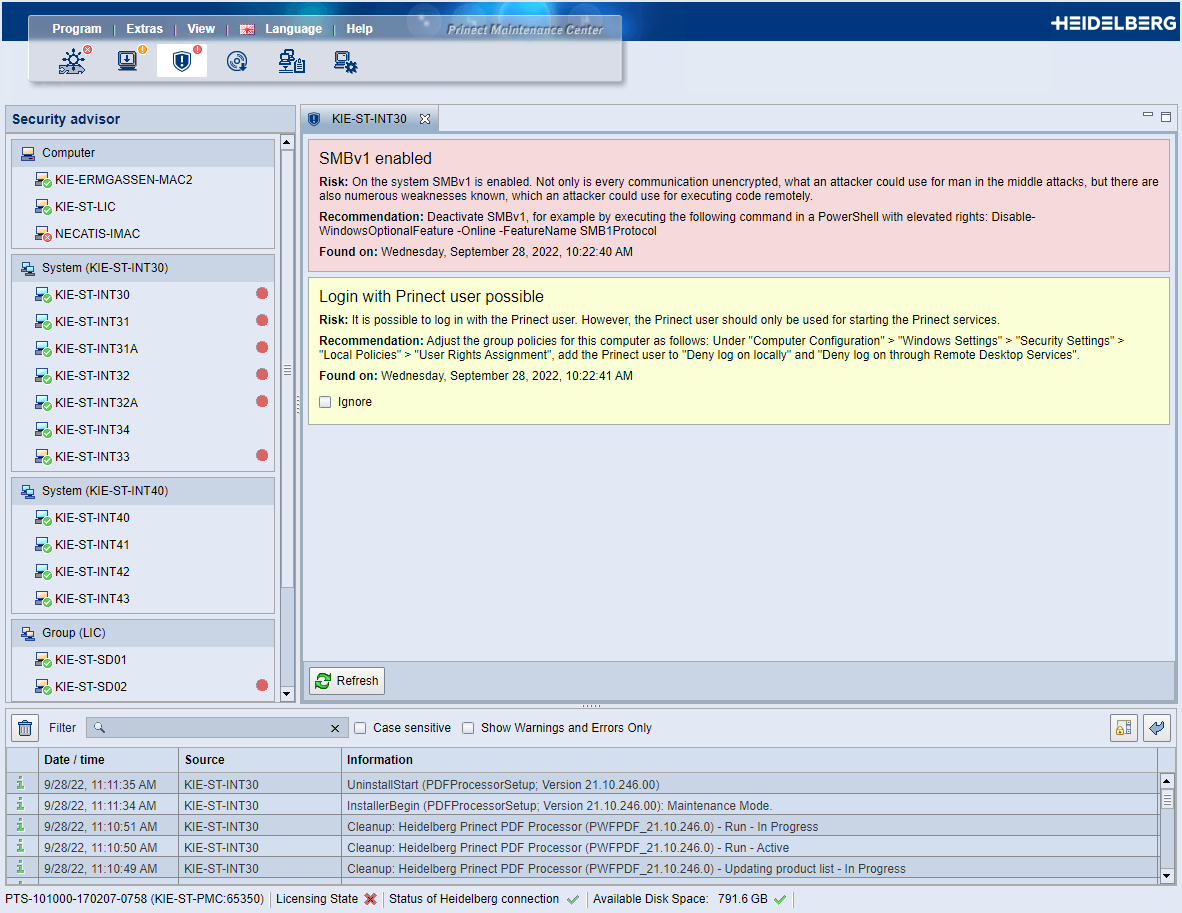
Ignoring less serious security issues
In some cases, you can ignore the security message. The option "Ignore" is displayed then; you can enable it. The respective security issue is then no longer taken into account in the Navigation pane and at the icon of the "Security Advisor" view.
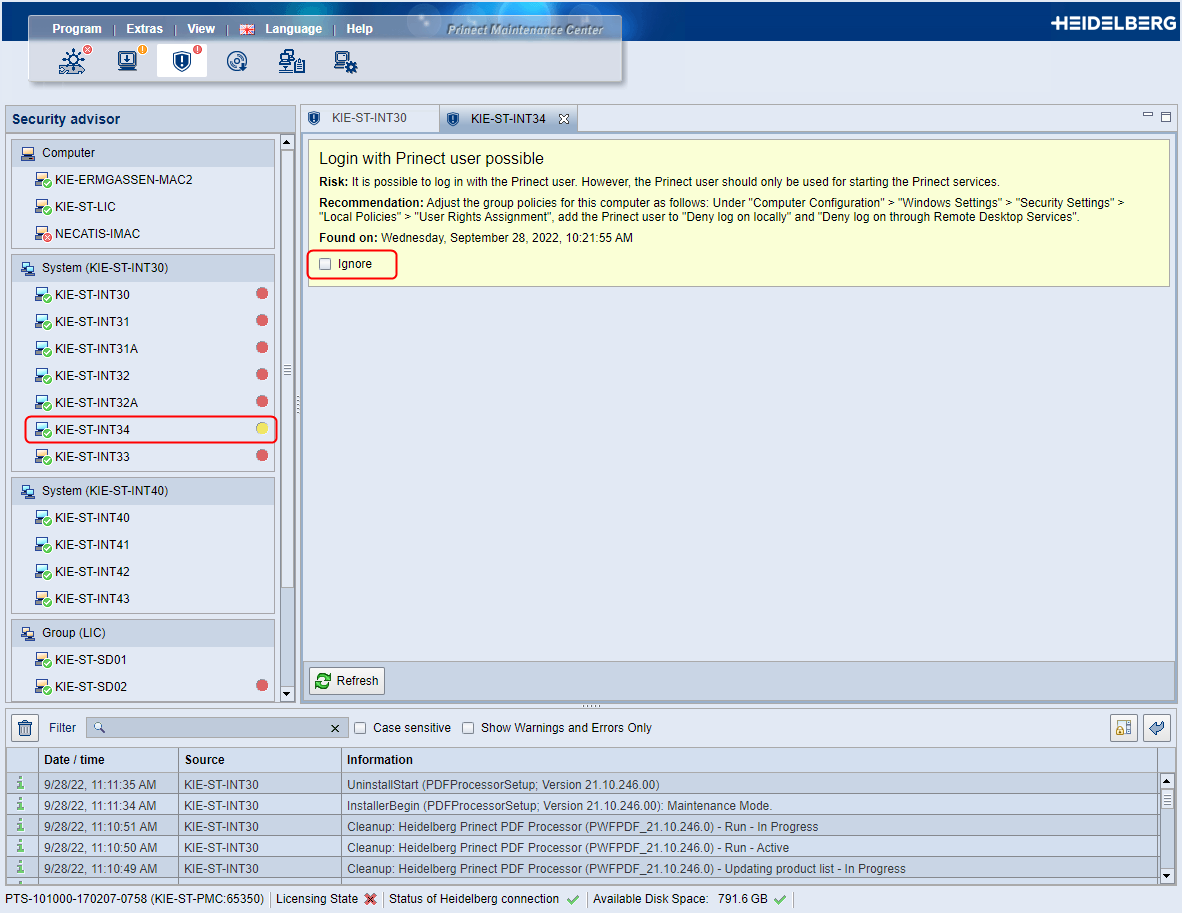
The security message is highlighted with a gray background if the option "Ignore" is enabled:
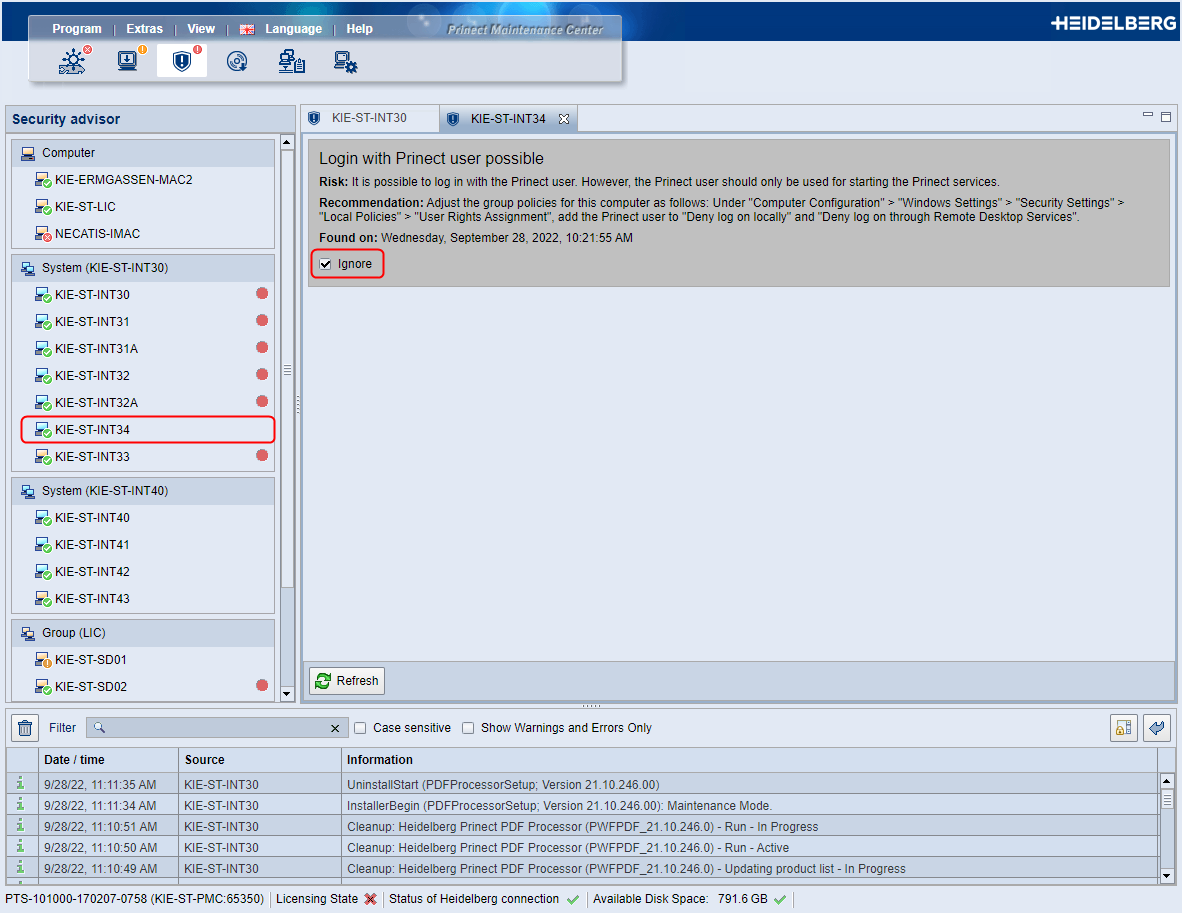
The following security checks are performed:
Check | Category | Can be disabled |
|---|---|---|
Windows updates are missing | Critical | No |
There is no malware protection (virus scanner) installed | Critical | No |
Adobe Flash Player is installed | Critical | No |
Prinect user accounts (system user accounts with extensive privileges) are used as interactive user accounts | High | Yes |
Oracle Java is installed | High | Yes |
There is no SA password for the administrator of the Prinect database server (MS-SQL) | High | No |
SMBv1 (Standard Message Block, Version 1) is enabled | High | No |
Data Execution Prevention is not enabled | Low | Yes |
The computer name contains unauthorized characters Computer names must comply with the RFC-952 standard that allows only characters "A-Z", "a-z", "0-9" and the minus ("-") character in a computer name. The computer name must start with an "A-Z" or "a-z" character and must not end with the minus character. | High | No |
Trust was withdrawn from a computer | Low | Yes |
You can have a "Security Report" created and you can print it if required. The Security Report contains the security messages of the Security Advisor and is displayed as an HTML page in a separate tab of the browser used.
Proceed as follows to create a security report:
1.Click the "Hamburger" menu in the caption of the Security Advisor Navigation pane and choose "Create security report":


2.A configuration dialog displays:

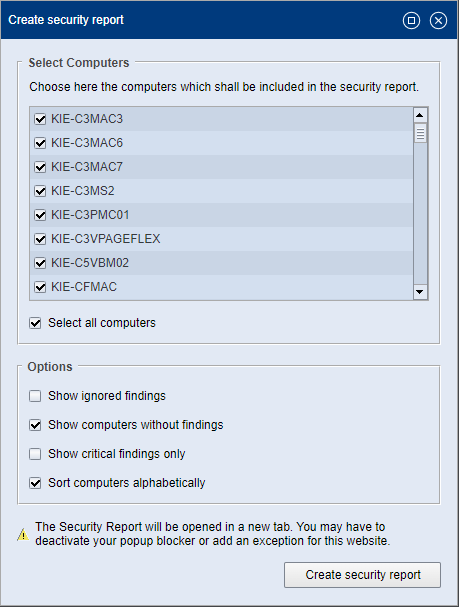
In this dialog, you can select the computers to be included in the security report. Click "Select all computers" to include all computers in the report.
"Options" lets you define the events to be included in the Security Report and if the computers are to be sorted alphabetically in the report.
3.Click "Create security report". The Security Report displays in a separate bowser tab:

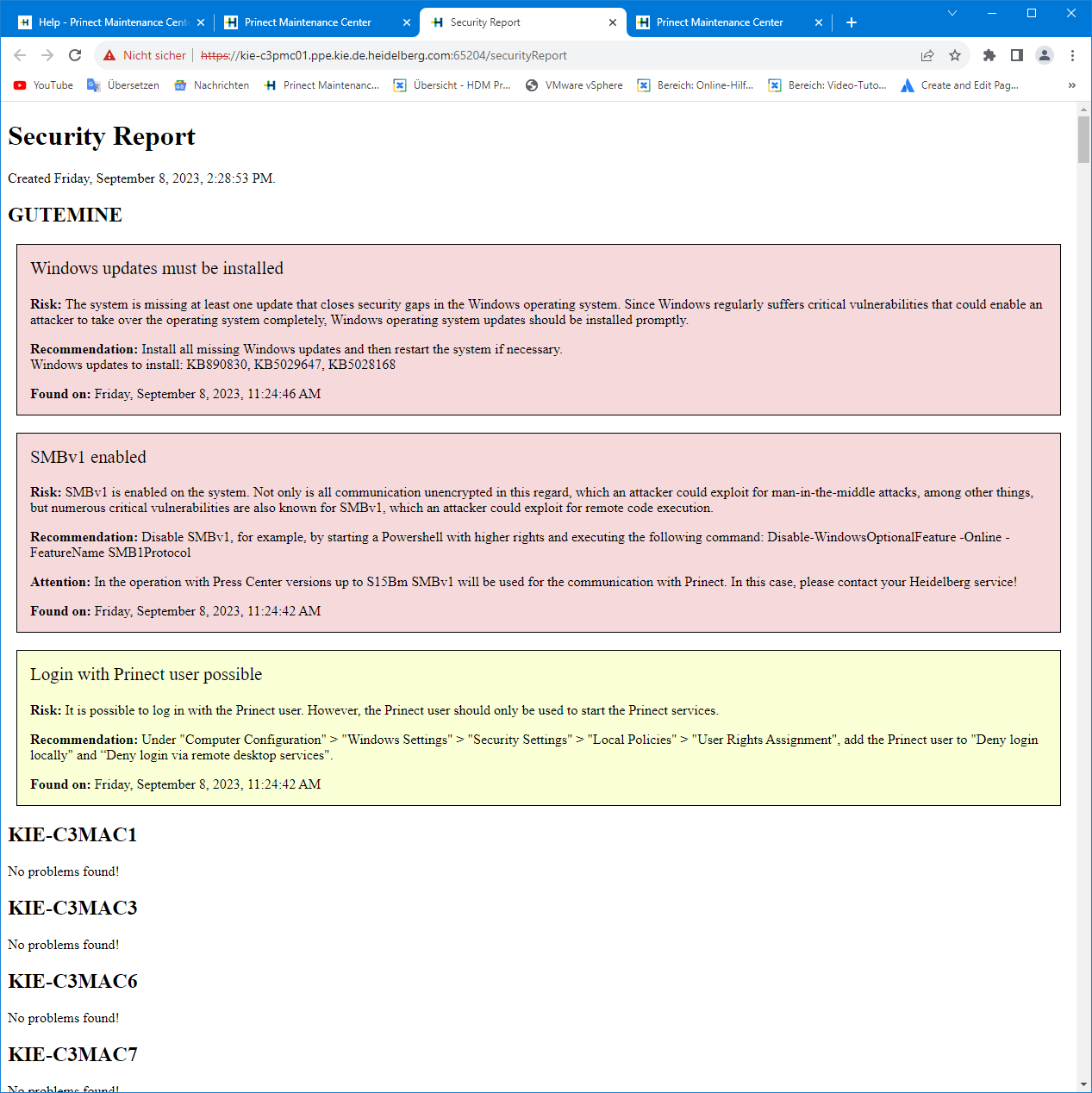
4.If needed, you can now print the report on a locally connected printer or save it as a PDF document.
Privacy Policy | Imprint | Prinect Know How | Prinect Release Notes

